KẾT CỤC THAI KỲ CỦA SẢN PHỤ MANG THAI TO TẠI BỆNH VIỆN ĐA KHOA TỈNH VĨNH LONG
Nội dung chính của bài viết
Tóm tắt
Đặt vấn đề: Phụ nữ mang thai to có nguy cơ cao gặp phải các biến chứng bất lợi như sinh mổ và biến chứng ở mẹ hoặc trẻ sơ sinh. Mục tiêu nghiên cứu: Đặc điểm kết cục thai kỳ của sản phụ mang thai to tại Bệnh viện Đa khoa Tỉnh Vĩnh Long. Đối tượng và phương pháp nghiên cứu: Tất cả các sản phụ đến sinh ở tuần thứ 37 trở lên của thai kỳ tại khoa Sản, bệnh viện Đa Khoa tỉnh Vĩnh Long từ tháng 9/2022 đến tháng 06/2023 thỏa tiêu chuẩn chọn mẫu và đồng ý tham gia nghiên cứu. Kết quả: Tỉ lệ sinh mổ ở nhóm thai to cao gấp 2,4 lần so với nhóm thai bình thường. Các nguyên nhân chủ yếu là: Đau vết mổ cũ, mổ chủ động, suy thai và chuyển dạ đình trệ. Tỉ lệ băng huyết sau sinh và rách tầng sinh môn IIIa của nhóm thai to chiếm tỉ lệ cao hơn so với nhóm thai bình thường sự khác biệt có ý nghĩa thống kê với p<0,05. Kết luận: Tỉ lệ mổ chủ động còn tương đối cao, tỉ lệ băng huyết sau sinh và rách tầng sinh môn IIIa tăng dần khi cân nặng của trẻ sơ sinh tăng.
Chi tiết bài viết
Từ khóa
thai to, băng huyết, rách tầng sinh môn, kết cục
Tài liệu tham khảo
2. Savas Menticoglou (2018), “Shoulder dystocia: incidence, mechanisms, and management strategies”, International Journal of Women’s Health, 10(2), pp723 - 732. https://doi.org/ 10.2147/IJWH.S175088.
3. Quan Kim Phụng (2016), Tỉ lệ và các yếu tố liên quan thai to tại bệnh viện Phụ Sản Thành Phố Cần Thơ, Luận văn tốt nghiệp thạc sĩ y học, Đại học Y Dược thành phố Hồ Chí Minh.
4. Małgorzata Lewandowska (2021), “The Role of Maternal Weight in the Hierarchy of Macrosomia Predictors; Overall Effect of Analysis of Three Prediction Indicators”, Nutrients, 13(801), pp 1-6. https://doi.org/10.3390/ nu13030801
5. Tamara Margit Jutta Pahlitzsch Geburtsh Frauenheilk (2019), “Influence of Foetal Macrosomia on the Neonatal and Maternal Birth Outcome”, GebFra Science, 13(79), pp1191–1198. https://doi.org/10.1055/a-0880-6182
6. Trần Thị Hạnh (2019), Tỉ lệ gãy xương đòn và các yếu tố liên quan ở thai phụ sinh con ≥ 4000 gram tại Bệnh Viện Từ Dũ, Luận văn tốt nghiệp bác sĩ nội trú, Đại học Y Dược thành phố Hồ Chí Minh.
7. Võ, Thị Mỹ Dung, và Trương Quang Vinh (2023). “Nghiên cứu các nguyên nhân băng huyết sau sinh và kết quả điều trị tại Bệnh viện đa Khoa tỉnh Ninh Thuận”. Tạp Chí Phụ sản 20 (4), 50-55. https://doi.org/10.46755/vjog.2022.4.1364.
8. Hoàng Thị Thùy Trang, Hoàng Thị Huệ, Nguyễn Ngọc Bảo Hân, và cộng sự. 2023. “Tỷ lệ tổn thương tầng Sinh môn của phương pháp giữ tầng Sinh môn Trong Sinh Ngả âm đạo tại Bệnh viện Hùng Vương năm 2021”. Tạp Chí Phụ sản 20, tr 38-42. https://doi.org/10.46755/ vjog.2022.4.1549.
9. Sabrina Pillai (2020), “ Fetal macrosomia in home and birth center births in the United States: Maternal, Fetal and newborn outcomes”, Birth, 47(4), pp 409-417. https://doi.org/10.1111/ birt.12506.
10. Sahruh Turkmen, Simona Johasson and Marju Dahmoun (2018), “Foetal Macromsomia and Foetal – Maternal Outcomes at Birth”, Jounal of Pregnancy, 14(2), pp1-9. https://doi.org/ 10.1155/2018/4790136


